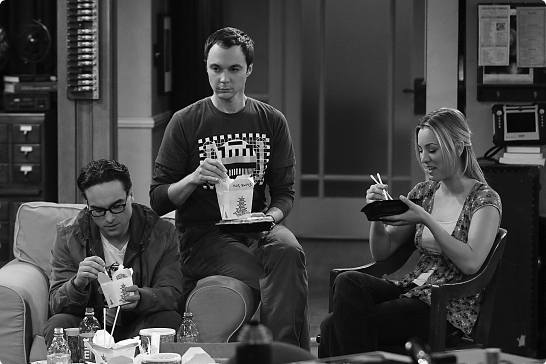Size and the Formation of Cliques
Size and the Formation of Cliques
Page 195
In the comedy series The Big Bang Theory, geniuses Leonard and Sheldon are roommates and close friends. Sheldon, the quirky theoretical physicist, is extremely socially awkward and rarely takes kindly to new people or situations. Inevitably, when Leonard starts dating their neighbor Penny, Sheldon has a difficult time adapting to his friend’s new time commitments. In fact, he even winds up trying to trail along on Leonard and Penny’s dates and frequently interrupts them when they wish to enjoy time alone. Even if you’ve never behaved quite like Sheldon, perhaps you’ve felt like he does—you love hanging out with your best friend, but whenever her boyfriend is around, you feel like you might as well be invisible. That’s because your presence has changed the nature of the communication from dyadic to group communication, but the other two people haven’t adjusted their communication behavior. They’ve remained a dyad, forming a subgroup that leaves you the lone outsider.

As a group’s size increases, similar problems arise. Cliques (or coalitions) emerge—small subgroups of individuals who have bonded together within a group (Wilmot, 1987). Cliques are a common part of group life—they’re a fixture in middle and high schools. You have your marching band kids, your football players, the art students, and so on. Many people think that they will escape cliques once high school ends, but this is usually not the case. In college, you might form cliques with people in your major, your dorm, or a particular organization. In office settings, members of cliques or coalitions typically sit next to each other in meetings, eat lunch together, and support one another’s positions.
When cliques take shape in a group, communication becomes more challenging because members are no longer dealing only with other individual members. Rather, they must navigate relationships and figure out how to communicate with entire subgroups. In addition, countercoalitions, in which one subgroup positions itself against another on an issue, can leave anyone who isn’t affiliated with a subgroup in a very awkward position.